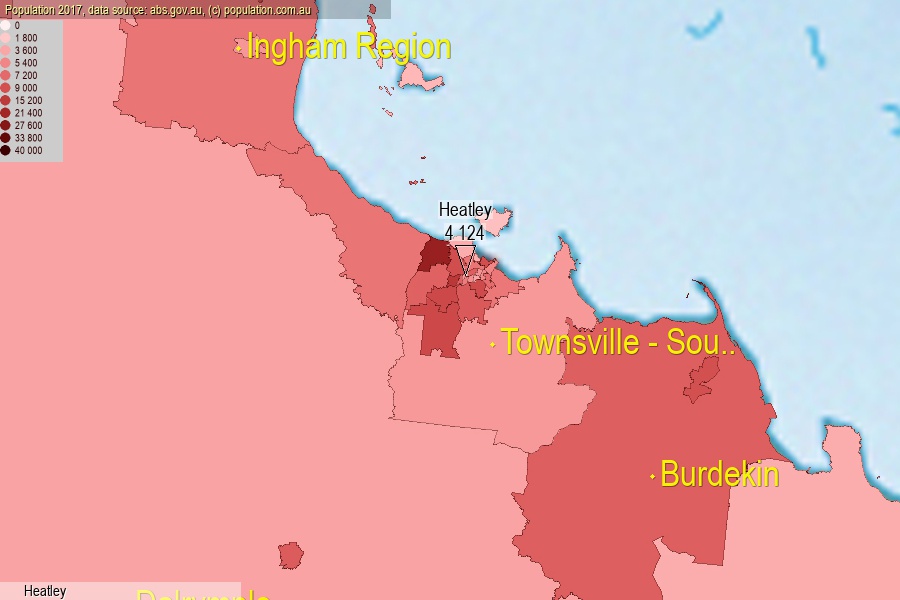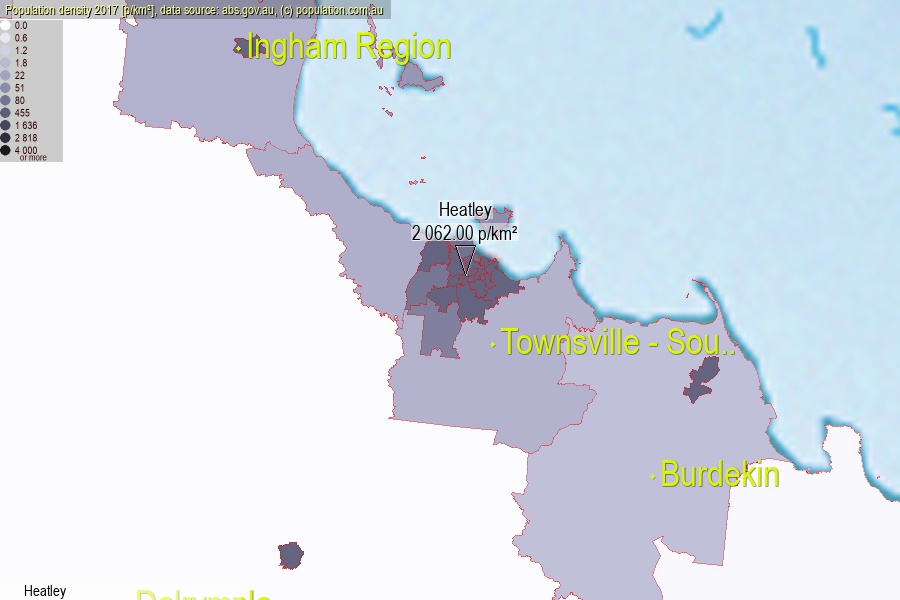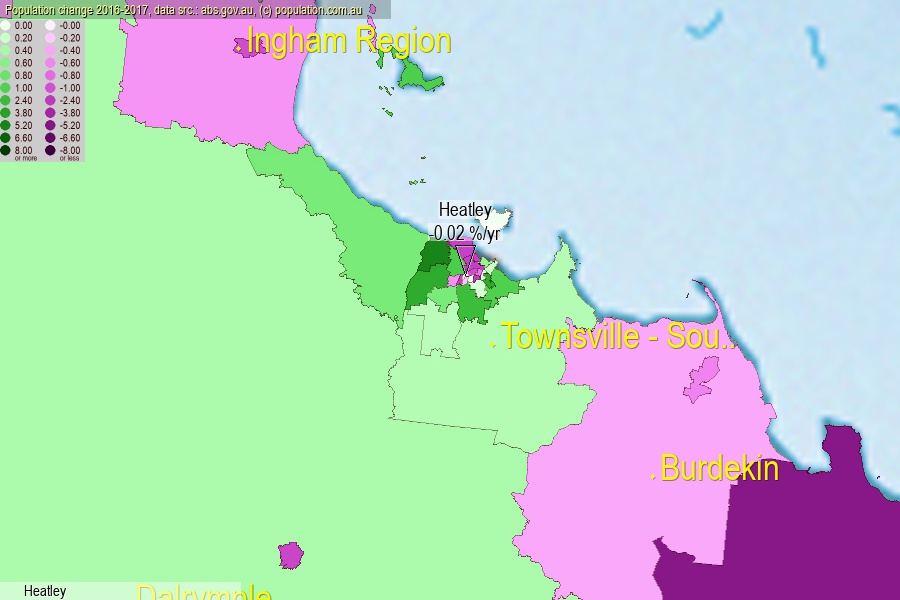 population.com.au
population.com.auLast official estimated population of Heatley (as Statistical Area Level 2) was 4 124 people (on 2017-06-30)[2]. This was 0.02% of total Australian population and 0.083% of QLD population. Area of Heatley is 2.00 km², in this year population density was 2 062.00 p/km² . If population growth rate would be same as in period 2016-2017 (-0.02%/yr), Heatley population in 2025 would be 4 116. [0]



Click to enlarge. Heatley is located in the center of the images.
Population [people], population density [p./km²] and population change [%/year] [2]
View borders » (new window) [4]
[1991-1992] -0.56 %/Yr.
[1992-1993] -0.66 %/Yr.
[1993-1994] -2.44 %/Yr.
[1994-1995] -2.56 %/Yr.
[1995-1996] -1.34 %/Yr.
[1996-1997] -0.28 %/Yr.
[1997-1998] -1.21 %/Yr.
[1998-1999] +0.44 %/Yr.
[1999-2000] -0.02 %/Yr.
[2000-2001] +0.28 %/Yr.
[2001-2002] -1.28 %/Yr.
[2002-2003] -1.14 %/Yr.
[2003-2004] -0.98 %/Yr.
[2004-2005] -1.26 %/Yr.
[2005-2006] -0.20 %/Yr.
[2006-2007] -0.73 %/Yr.
[2007-2008] +0.55 %/Yr.
[2008-2009] -0.73 %/Yr.
[2009-2010] -0.32 %/Yr.
[2010-2011] -0.23 %/Yr.
[2011-2012] -0.58 %/Yr.
[2012-2013] -0.63 %/Yr.
[2013-2014] -1.49 %/Yr.
[2014-2015] -1.64 %/Yr.
[2015-2016] -0.55 %/Yr.
[2016-2017] -0.02 %/Yr.
[0] Calculated with linear interpolation from officially estimated population
[1] Read more about SA2 and Australian Statistical Geography Standard (ASGS) on abs.gov.au
[2] Population data from Australian Bureau of Statistics (Population and density: 2017; change: 2016-2017)
[3] Digital Boundaries: Australian Statistical Geography Standard (ASGS) 2016.
[4] Border coordinates are simplifyed using Ramer-Douglas-Peucker algorithm.